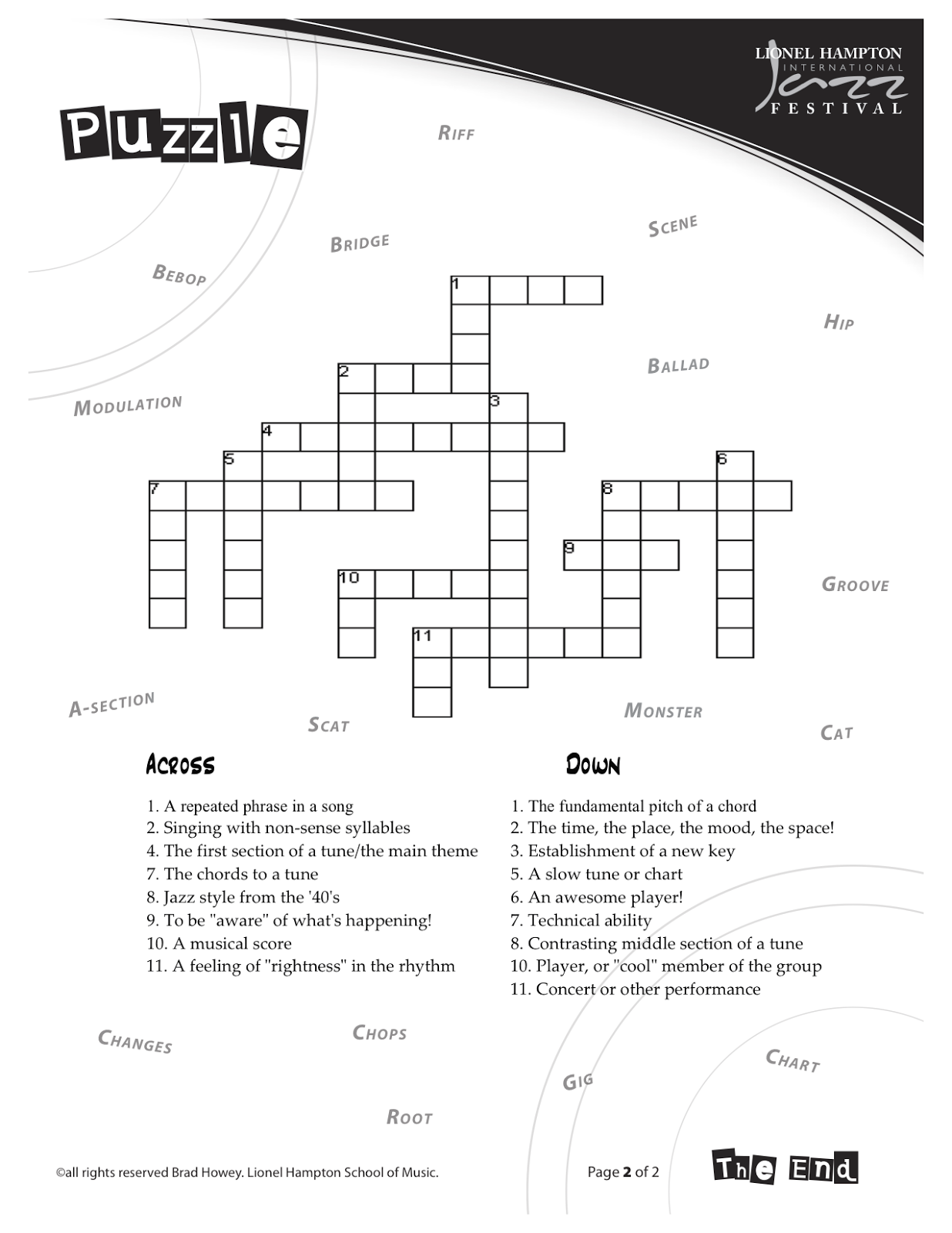Jazz Music and Musicians
Kindergarten
We begin by singing a song they are familiar with like Twinkle, Twinkle...I continue with a listening selection of a jazz version of Twinkle, Twinkle... I want students to hear the difference and be able to identify that there is a familiar melody that has been changed. (Improvisation!)
I ask students to now sing along with the jazz version. How did it make them feel? Which version did they like best, etc. We then move on to the story Charlie Parker Played Bebop.
 This is a great introduction to scat singing with nonsense words or syllables. I use cards with the nonsense words on them to read before the story. Students repeat the words. We read the story and then discuss what they may have learned about Charlie Parker. I play the CD and have them follow along in their own shared copies of the book. Then, I ask students to read to each other.
This is a great introduction to scat singing with nonsense words or syllables. I use cards with the nonsense words on them to read before the story. Students repeat the words. We read the story and then discuss what they may have learned about Charlie Parker. I play the CD and have them follow along in their own shared copies of the book. Then, I ask students to read to each other.
On another day we discuss improvisation and review how jazz performers use this in their their music. I play jazz music and ask students in pairs to "improv" a dance across the carpet circle. After this activity I play some Ella Fitzgerald scatting.
I hold out paintbrush and bucket cards with the nonsense scat words from the Charlie Parker book. I ask students to try scatting using the words. I usually give a few examples of my own before holding out my microphone to them.
First Grade
We begin with a review of improvisation from kindergarten. I ask them about jazz music to assess prior learning. I pass a ball or beanbag while students improvise a story. They each add one sentence at a time to create a silly, nonsense story.
We then read the story John Coltrane's Giant Steps.
After listening to the story with the CD, we improvise using our own selection of instruments.
Raindrop-triangle
Box-drums and woodblocks
Snowflake-bells
Kitten-meows and maracas
Box-drums and woodblocks
Snowflake-bells
Kitten-meows and maracas
We then watch Giant Steps on youtube. There is a great version that shows the music on the printed page. Giant Steps Animated Sheet Music
and/or Giant Steps with Architecture
Then we listen to and learn to sing A Tisket, A Tasket.
Listen to Ella singing A Tisket...
I read the book to them after singing.
and/or Giant Steps with Architecture
Then we listen to and learn to sing A Tisket, A Tasket.
Listen to Ella singing A Tisket...
I read the book to them after singing.
Second Grade
We being with a listening selection. I like to use the jazz version of Ellington's The Nutcracker.
The previous link gives examples of the original piece as well as the jazz versions. We compare and contrast the Nutcracker classical and jazz versions.
We continue on with the book Hip Cat by Jonathan London.
We discuss the language of jazz using a jazz vocabulary worksheet.
Students are asked to complete the worksheet in groups and then use some of their words to tell a "jazzy" story.
I also use the PBS Chuck Vanderchuck site to explore the instruments of jazz. We use the lyrics section to create funny songs. They love it!
Third Grade
I like to begin with listening examples of some jazz greats. I finish with Ella Fitzgerald
We then discuss scat singing with a few examples. This leads us into The Jazz Fly by Matthew Golub.
This is a great book and nice introduction to scat singing and improvisation. I write the repeated "scat" syllables on the board. I ask students to repeat them as I read them in the book. It's a fun read aloud and students enjoy adding to it as I read.
I hand out different scat syllables on coordinating cards of paint brushes and buckets. Someone who has a paintbrush must match up with a bucket. These pairs then create a scat using their pairs. Then, I ask I have them work in groups to create their own scat song.
Here is a youtube jazz chord backing track I use when students are asked to improvise vocally or on instruments.
Fourth Grade
We start with a short history of jazz with a youtube video. This one is a sample: Jazz History in less than 15 minutes!
I split the students into groups and they choose one jazz artist per group. They choose from the following books and read them to each other:
Celia Cruz: Listening Example and biography
I use this book because it is in Spanish and English, we have a large Hispanic population, and it represents a famous woman in the jazz world.
Louis Armstrong: Listening Example and biography
Ella Fitzgerald: Listening Example and biography
Duke Ellington: Listening Example and biography
Dizzy Gillespie: Listening Example and biography
After reading, they complete a biography sheet I adapted for this lesson. They will use this information to create an animated cartoon about their artist using Goanimate.




































